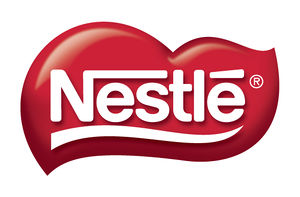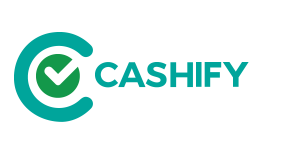Introduction
Nestlé is a powerhouse of consumer brands spanning across baby foods, bottled waters, powdered drinks, cereals, coffee, drinks, pet-care, and more. The Business model of Nestle involves its business plan, Revenue model, its competitors, SWOT Analysis and many more.

Nestlé focuses on generating demand for its current brands, while improving its operational efficiency, and by allocating massive amounts of capital to buy and sell relevant consumer brands, which help the company to keep its dominance in the consumer food and beverage industry.
Nestle offers a comprehensive range of high-quality, secure food items at competitive costs for large consumers. Nestlé has 447 plants in 189 countries and has about 447 employees, 339,000 people.
Products
Although not many might relate directly to the Nestlé brand, in many countries around the world, most people can relate to the portfolio of brands owned by the company, which span across baby foods to pet care.
- Maggi
- Cerelac
- Gerber
- Nestlé Pure Life
- KitKat
- Milkybar
- Nescafé
- Milo
- Nesquik
- Nestea
- Boost
- Friskies
Business Plan
Nestle is an organic design model. The stars in the BCG Matrix include dairy goods, powdered, and liquid drinks, ready dishes and culinary aids, and clothing business sectors. Nestlé’s success is built on its Nutrition, Health and Wellness strategy. Nestlé’s portfolio is well‑positioned for growth. The key to our long‑term success continues to be understanding and serving the consumer. By identifying consumer trends early and acting quickly to capture them, we remain at the forefront of the fast‑moving consumer goods industry. This includes delivering products with simpler ingredients, as well as more premium, organic, natural and fortified foods and beverages.
Nestlé has the largest research and development network in the food and beverages industry, continually innovating and renovating our portfolio to meet changing consumer demands. Nestlé also offers a range of affordably-priced, high‑quality, nutritious products.
Nestlé has a significant global market share in the categories including coffee, petcare, infant nutrition and bottled water. The core of value creation comes from product, service and business model innovation. Strength in research and development is a key differentiator for Nestlé, helping us to respond quickly to the ever‑changing world.
The company is focusing its efforts consistently on better understanding India’s changing way of life, anticipating the requirement of consumers to supply their product offerings to taste, nutrition, health, and health.
Revenue model
Nestlé has more than 2000 brands in over 180 nations and is one of the largest food and beverage companies in the world. Nestle is a multinational brand with a present net worth of about $270 billion. The success that the brand has is due to its pricing strategy. The revenue of Nestle is continuously growing, this depicts the successful identification and placement of its products in the market.
Nestle’s pricing strategy is fairly distinctive in contrast with other brands. It merely hinges on recognition which is attributed to the apparent quality of the product. Based on this quality and the attitude of the customers, Nestle assesses the pricing strategy it wants to implement.
Nestle has several brands and for every brand, it has separate departments that assess the pricing strategies of its rivals. Besides that, it examines the marketing style, sales, and innovation of rivals. The competitive pricing strategy assists in achieving Nestle’s desired position as they acknowledge the preferences of the consumers.
Competitors
The brand is a conglomerate of many brands, which makes it hard for selecting brand which are in competition with Nestlé. Nearly all the brands and products have similar competition on a global perspective.
SWOT Analysis
Strengths
- Competitive advantage: Nestle has been operating in the market for a very extensive period. Such extensive operations and understanding of the customer behavior have offered the company with certain competitive advantages.
- Resources: The company has a strong network of resources, allowing it to integrate the operations both, forwards and backward. Such integration allows it to control the quality and efficiency of the supply chain, hence, maintaining its brand image in the market. Discipline and clear priorities for allocation of resources and capital.
- Strong Research and Development: Nestle has strong Research and development capabilities, allowing it to innovate the products and processes both simultaneously to capitalize the different market opportunities.
- Sustainable Growth: Ensures sustainable organic sale growth, enhanced margins, and consumer-relevant nutrition for all regardless of the degree of income.
- Strong Supply Chain operations: The nestle group encourages innovations at the local levels, incorporates technology and is increasing the traceability of the sources of the raw materials of its products. This enables the group to achieve substantial operational efficiencies.
Weaknesses
- Problems in product marketing: Nestle has time and again faced a massive backlash from people across the globe for not correctly positioning and marketing their products. One classic example is the marketing of breastfeeding baby formula to people in poorer nations. Uneducated mothers were using the product with contaminated water, causing high cases of sickness from the same.
- Organizational Structure: Nestle’s current organizational structure is divided based on its product portfolio and not based on its geographical operations. This creates vast power distance when it comes to decision making and prevents agility in operations. In expanding its operations, this always proves to be a major hurdle.
- High dependence on advertising: Nestle is majorly dependent on advertising to promote its products; it increases the marketing costs and consequently, a high risk associated with the returns. With disruptions coming up, this strategy will not sustain Nestle in the long run.
Opportunities
- Increasing Transparency: The present consumer holds more information than ever. With the growing presence on the internet, it will be favorable to increase transparency. Increasing transparency would mean that consumer knows where the raw materials are sourced from, when they are sourced and who sourced them. The consumer feels more connected and is trusting the brand more.
- Sustainability: Integration and operating sustainably will help the group to reduce costs, increase efficiency and utilize labor properly. Local integration and production will make operations lean, which will reduce long term expenses.
- Increasing disposable Income: Increase in the average household income in Asia, Oceania and Sub-Saharan regions is an excellent opportunity for Nestle to expand its operations. Introduction of new or existing products can be taken up to increase its product portfolio and hence, increased presence and profits.
Threats
- Climate Impact: Changes in the climate and its subsequent impact can be seen on numerous Nestle product’s raw materials. Raw materials like coffee, wheat and dairy are affected by climate change. They are highly likely to affect Nestle’s growth over a while.
- Strategic Investment choices: Investment choice’s failure to align with such a diverse product run group is exceptionally high. The group runs a higher risk of losing brand presence and a potential sum of money.
- Product Quality and Safety: Nestle, in the past, faced much negative effect on its reputation and consumer trust after non-compliance of food safety. The best example is of Maggi in India, which failed to comply with one of the laboratory tests and lost a massive share in the market.
- Rising Competition: Nestle’s product portfolio competes with various multi-national players and numerous local players. With the advent of more technology and constant disruptions in the industry, nestle is always at a risk of losing its existing consumer base.
Conclusion
Nestle is the world’s biggest food producer and market leader in coffee and mineral water, featuring products including milk-based food and culinary aids, cereal, immediate coffee, and food for babies.




